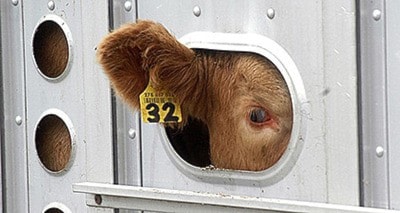By Cam Fortems, Kamloops This Week
Auctioneer Wayne Jordan thought it couldn’t go any higher.
A little over a decade ago, cattle prices plunged to a low of 85 to 95 cents a pound when bovine spongiform encephalopathy (BSE, more commonly known as mad-cow disease) was discovered in Canada.
Prices remained there for years, suppressed by a combination of a high Canadian dollar, waning demand and a ban on exports to many countries, including Canada’s best trading partner south of the border.
“A year ago, to show you how high it is, that 600-pound steer was $1.50-ish a pound,” Jordan said.
That set a record.
Since last year, prices per pound have steadily climbed again, now reaching $2.30 to $2.40 a pound in the auction ring — a 50 per cent increase in a year.
“People will look at it and say producers are printing money,” said Jordan, who has called out the highs and lows over those years at the B.C. Livestock Producers Co-operative auction ring in East Kamloops.
“But, we went through seven or eight years raising beef at below cost.”
Kevin Boon, general manager of B.C. Cattlemen’s Association, said stampeding prices began last fall.
“And it’s just continued,” he said.
Some of the answers for the high prices — which customers are seeing on store shelves — are simple to understand.
Beef cattle is a commodity ruled by the simple fact of supply and demand.
Years of poor prices prompted ranchers to give up or reduce numbers.
In the latest report available, B.C.’s beef-cattle herd has shrunk to about 200,000 breeding cows. That’s down from a peak of 320,000 in 2005.
“We’ve lost one-third,” Boon said.
There is also increased demand from Asia — China in particular.
In those lean years, Canada’s exporting agencies and ranchers increased focus on foreign markets, which produced results.
Add to that the decline of the Canadian dollar to nearly the 90-cent level, making exports cheaper, and there’s a recipe for improved profits for ranchers.
There is another factor in beef pricing that is less easy to understand.
But, it’s a simple rule, Jordan said: “The farmer and the rancher both can’t win.”
Some of the profit sandwiched between the range and the supermarket cashier goes either to farmers — who win on high prices for grain, which is fed to cattle before slaughter — or to ranchers.
The end price at the counter is sensitive.
If it rises too high, consumers look elsewhere.
There is a glut of grains on the North American market, driving down prices and making cattle feed cheaper. That cheaper input cost allows more money to go to ranchers.
Ranchers who want to expand herds will hold back heifers for use as breeding cattle, which will further reduce supply in the short term.
The amount of cattle going to market in Kamloops will seasonally peak next month, when ranchers will have profits sloshing around in their jean pockets.
Doug Houghton, a rancher who sells farm equipment at Prairie Coast Equipment in Kamloops, believes ranchers will start to replace equipment that’s been nursed along through the lean years — something that should benefit the regional economy.
“In all the years I’ve been on the earth, it’s the fastest change I’ve seen,” he said.
Which is all well and good if your backyard happens to be thousands of acres.
But, what’s it mean for consumers?
While prices at the counter resisted higher input costs in the background, retailers finally relented and have begun to pass them on.
Brody White, who took over butcher Chop ‘N Block in Aberdeen this spring, said prices for prime cuts have climbed 20 per cent since then.
“Definitely there’s higher prices,” White said.
“I think a lot of people are staying away from beef. They’re moving to pork or chicken.”
White has another, simpler answer — eat less.
“Cheaper cuts is one option. [But] I find people are a bit gluttonous with their meat. You don’t need a two-pound steak for one person.”
The news is all positive for family-based ranchers, a model that dominates the B.C. industry.
Despite the good times, however, Haughton said decade-long depressed prices deterred the next generation of ranchers.
“A generation of children have gone on to do something else. They’re not coming back,” he said.
